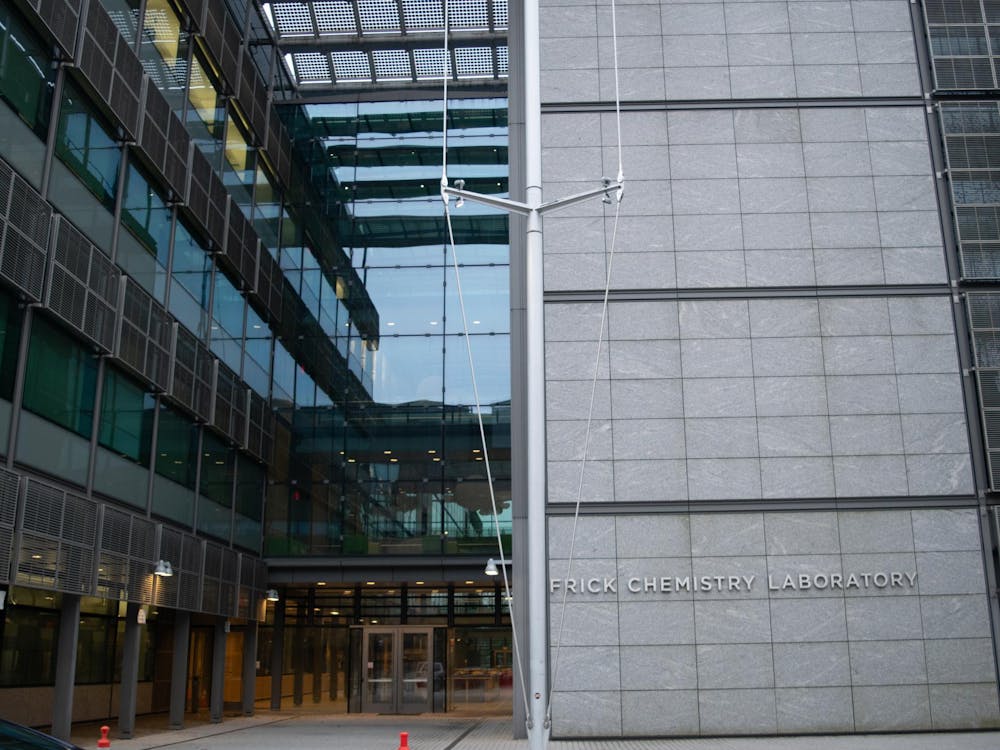A new University websiteoutlining the roles of strategic planning task forces and their preliminary reports will allow community members to stay informed about the planning process and provide input, University President Christopher Eisgruber ’83 said during this month’s Council of the Princeton University Community meeting.
Eisgruber launched the strategic planning process in January with the purpose of creating a flexible, iterative and dynamic framework for future decision-making by January 2016.
The new website will be updated periodically and includes summaries of each task force and a list of its members.
“There will be both formal and informal opportunities to comment on what the task forces are doing,” Eisgruber said, noting that the community can contact task force members directly or submit a comment to the website, which will be redirected to the appropriate correspondent.
“You’re free to make it your homepage,” Eisgruber said, spurring laughter from the audience.
The final strategic planning document will highlight the University’s priorities; identify challenges, opportunities and risks; and describe the University’s resource envelope, Eisgruber said.
“[The document] is a way to evaluate choices rather than a statement of what the choices are and will be,” Eisgruber said, adding that he expects different task forces to operate on varying timelines.
The task force recommendations do not automatically become part of the campus plan but are first vetted and judged against the University framework, Eisgruber explained.

Task force members were chosen based on their expertise regarding the specific issue and include undergraduate and graduate students for projects such as graduate student housing, Eisgruber said.
He also said the University will be paying close attention to the opportunity costs of various decisions, especially given the recent impact of the financial crisis.
“We need to be thinking about what sorts of options we have and how the selection of one option or another option is going to constrain choices in the future,” Eisgruber said.
He said that individual departments also engage in planning on a regular basis and that he expects additional task forces to be formed in the future as new issues arise.

University Provost David Lee GS ’99 said the University is currently in a solid financial position with a market endowment value of $21 billion as of June 2014 and a very solid credit rating.
“We have for quite some time had a very generous donor base,” Lee said. “Our annual giving participation rates are around 60 percent, and that’s head and shoulders above our peers in the Ivy plus group.”
However, Lee said the University is still subject to priority tradeoffs —budgetary decisions that must be considered by the University’s Priorities Committee, of which he is chair.
The committee is made up of cabinet members, faculty, students and staff and generates recommendations for the next fiscal year by considering elements such as financial aid, salary pools and campus projects, Lee said.
While Lee said that$21 billion seems like a lot of money, he added that individual requests for funding often do not consider the endowment’s payout and future growth restrictions.
“We cannot and should not spend the principal,” Lee said of the endowment since then the University would eventually run out of funds.
The University reported a 19.6 percent annual return on its endowment this year, an encouraging figure that is not, however, fully indicative of the University’s financial performance, Lee said. The more relevant figure is its 10-year average return, which stands at around 10 percent, Lee noted, adding that annual returns are volatile, especially considering the recent economic downturn.
“Not too long ago we had negative returns,” Lee said, establishing the need to consider tradeoffs.
The University’s longstanding planning rule is to reinvest 5 percent of the long-term 10 percent return and to spend the remaining 5 percent, Lee said. How much the University spends is not tethered to the volatile annual return, Lee said, but rather to longstanding principles and values such as its commitment to financial aid.
Lee also said that of the 5 percent that is spent, a significant fraction is used to pay for annual needs that are subject to inflation. The remaining fraction of returns is available for new spending projects and compliance, safety and risk management, such as additional staff required for sexual assault cases under Title IX.
“We’re going to have some tough decisions,” Lee said, noting that it is the committee’s responsibility to take care of current demands without jeopardizing the needs of the future.
The recently inaugurated University Athletics Director Mollie Marcoux ’91 also gave a presentation at the meeting that outlined the importance of student-athlete support and maintaining the University’s athletic success.
“Every day, we’re seeking excellence,” Marcoux said.







